The Huawei P8 Review
by Andrei Frumusanu on June 4, 2015 8:00 AM EST- Posted in
- Smartphones
- Huawei
- Mobile
- P8
- Kirin 930
Software - EmotionUI 3.1
One of the aspects I found positive about the Mate 7 and Honor 6 was EmotionUI. In both iterations Huawei was able to impress with their differentiation, even if there were some stumbles in terms of usability. The P8 ships off with the first Android 5.0 Lolipop implementation of EmotionUI, which now sits at version 3.1. To get to the point, it seems that this was only a minor incremental update in terms of UX design and experience.
The P8's default theme and general design language shifts from the extremely bright and minimalistic take that we've seen in EmotionUI 3.0 of the Mate 7 towards a more colourful and contrasted UI. The blindingly white screens and hard to distinguish grey icons of the previous version are now gone in favour of more distinguishable replacements. All that needed to be done was to add colourful backgrounds to the glyphs - and that's exactly what Huawei has done here.
The notification shade is now a translucent black with a gaussian blur effect. It also seems Huawei has made better use of the settings panel, as it drops the lesser used shortcuts and increases the size of the remaining ones. The settings menu is comprehensive and offers a variety of options in the categories you expect them to be.
Huawei continues the choice of not including an application drawer with the EmUI launcher, so all installed apps are placed on the launcher screens. Here again we see the practice of having standardized icon frames for all applications, something I'm personally not a big fan of and see it as the biggest incentive to go the route of an alternative third-party launcher. It would be appreciated if Huawei had at least included the option to disable app-icon framing throughout the OS.
The system applications are a minor evolution of what we saw on EmotionUI 3.0. The most notable changes are the theme accents such as the black bar colour of the various in-built apps such as the dialer and gallery app.
A rather nagging aspect of the default settings of the device is the power monitoring of background applications. Huawei closely tracks and logs process activity whenever an application is active in the background. This is certainly helpful to track down rogue applications, but it would have been better to have the tool have more lax warning thresholds as it will get triggered by many apps even if their background activity is only minimal.

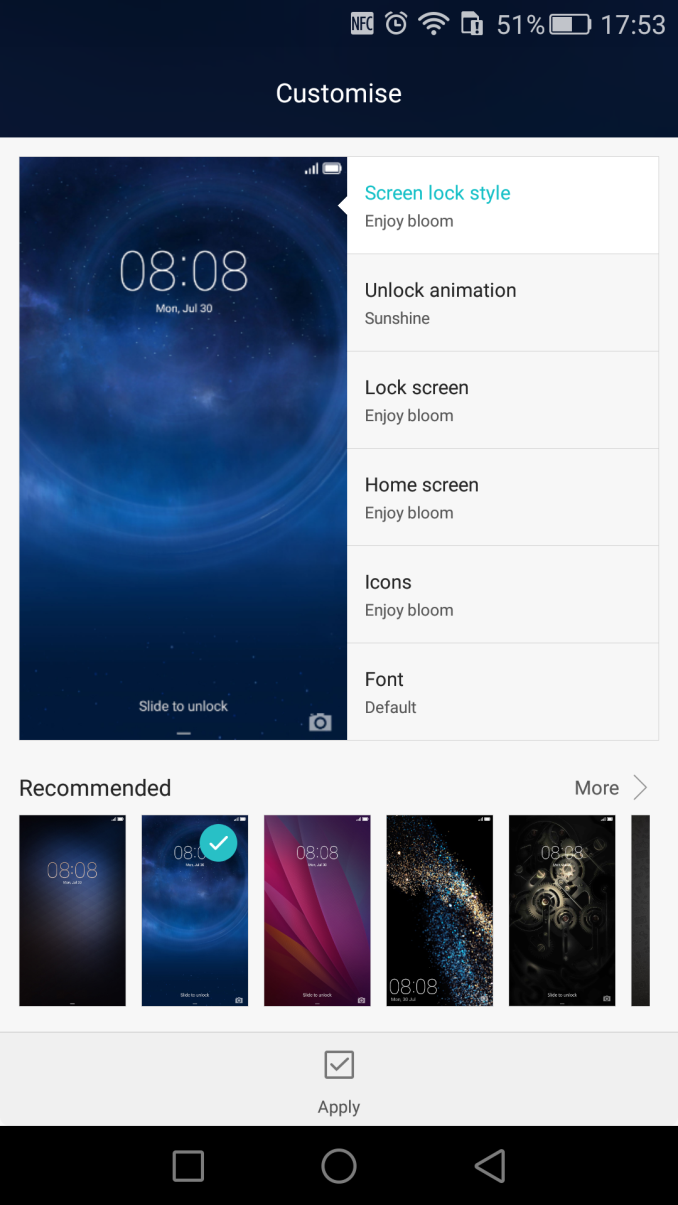
Since starting the review on the device's stock firmware of GRA-L09V100R001C900B039 Huawei has already sent out two OTA updates which are supposed to improve system stability and performance. A notable fix which some reviewers didn't get to see was the option to disable "Smart Screenshot", a feature where one would double-tap or draw with a knuckle to capture a screenshot. This was quite annoying as it had quite a lot of false positives detecting normal fingers as a knuckle and making you start drawing an outline for a screenshot when for example you wanted to pull down the notification shade. With this being addressed in the latest OTA, I'm left to find very few outstanding faults with the software.
EmotionUI 3.1 on the P8 didn't bring any larger changes even though this is Huawei's first Android 5.0 Lolipop implementation. The very simply addition of coloured icon backgrounds brings a lot variety to the UI, and it polishes what was for me an already clean and good-looking OEM skin. Considering this device is powered by a weaker A53 SoC, the UI performance was still good although not perfect. At the first glance it seems that the CPU isn't able to match other more powerful flagships with bigger cores, so let's move on to the benchmark section to see what it actually performs like.


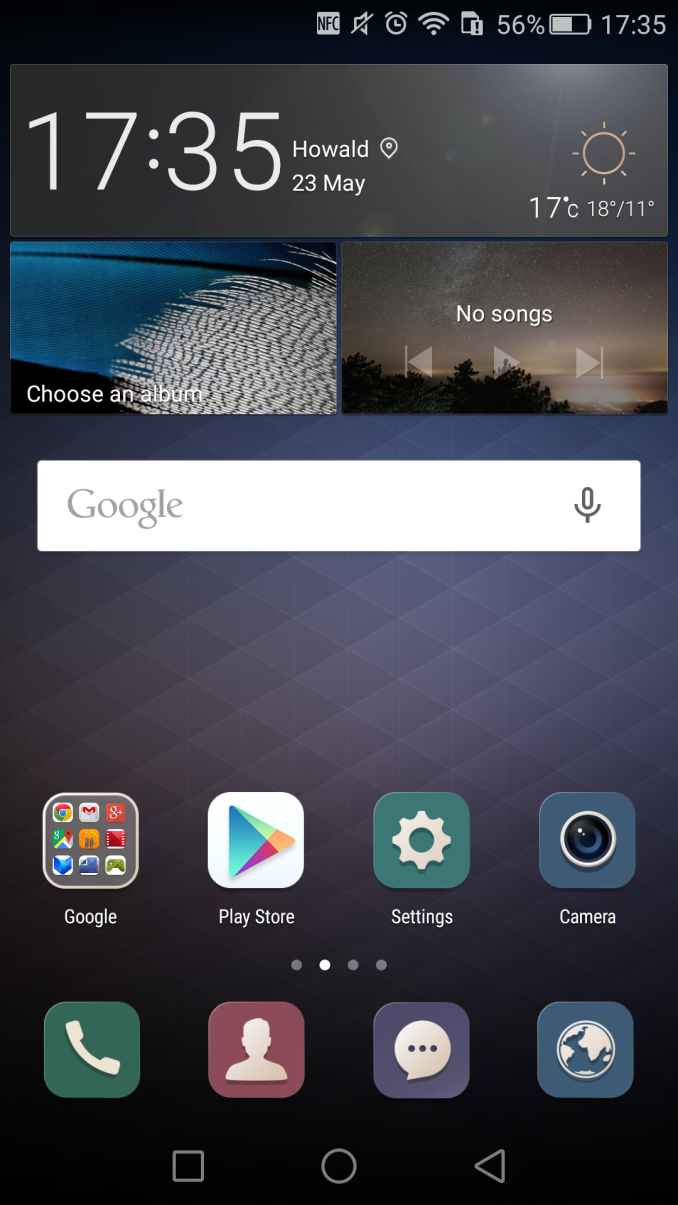

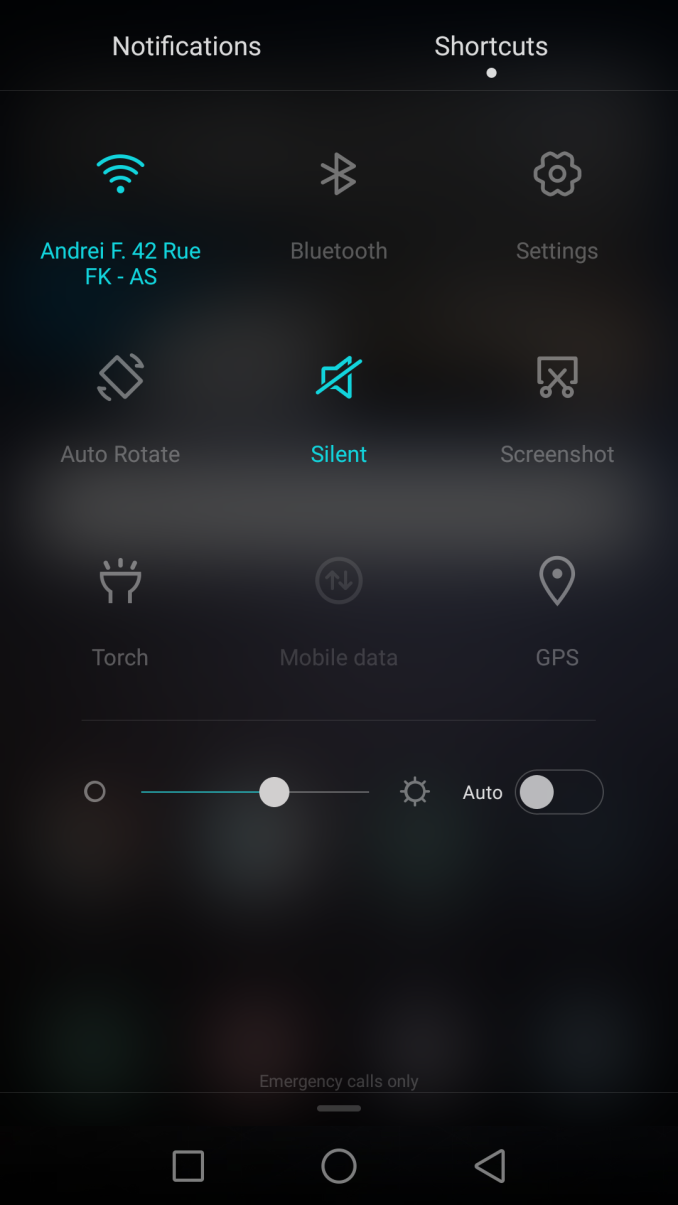
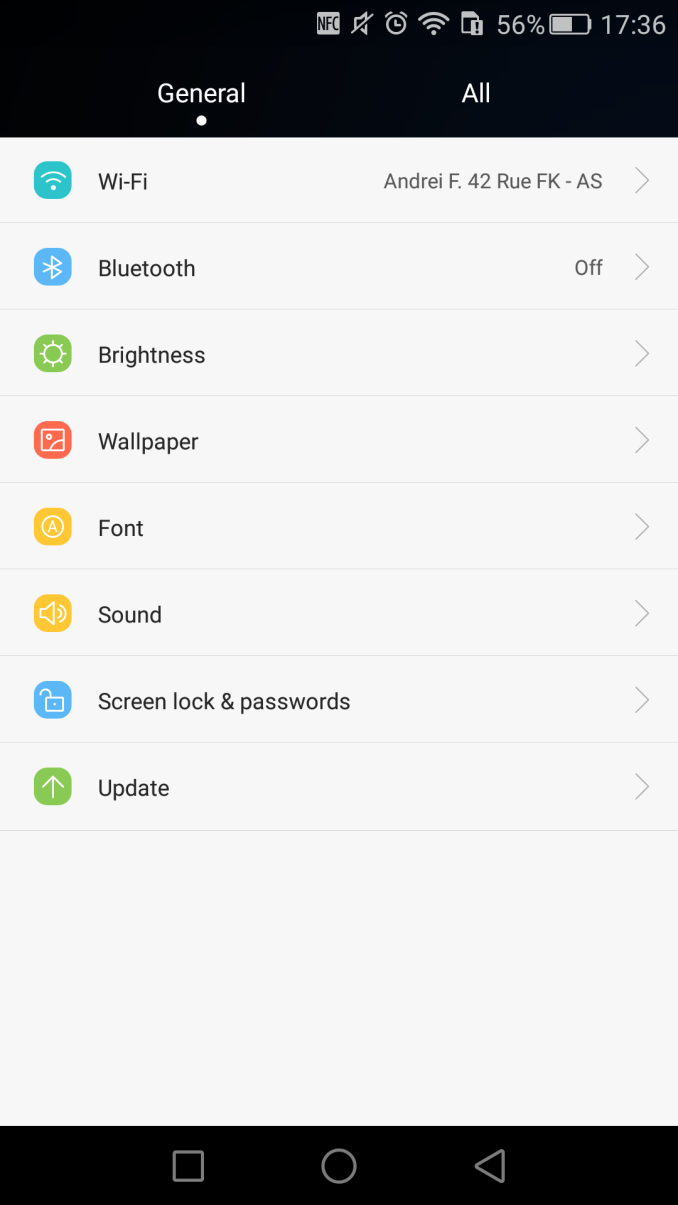
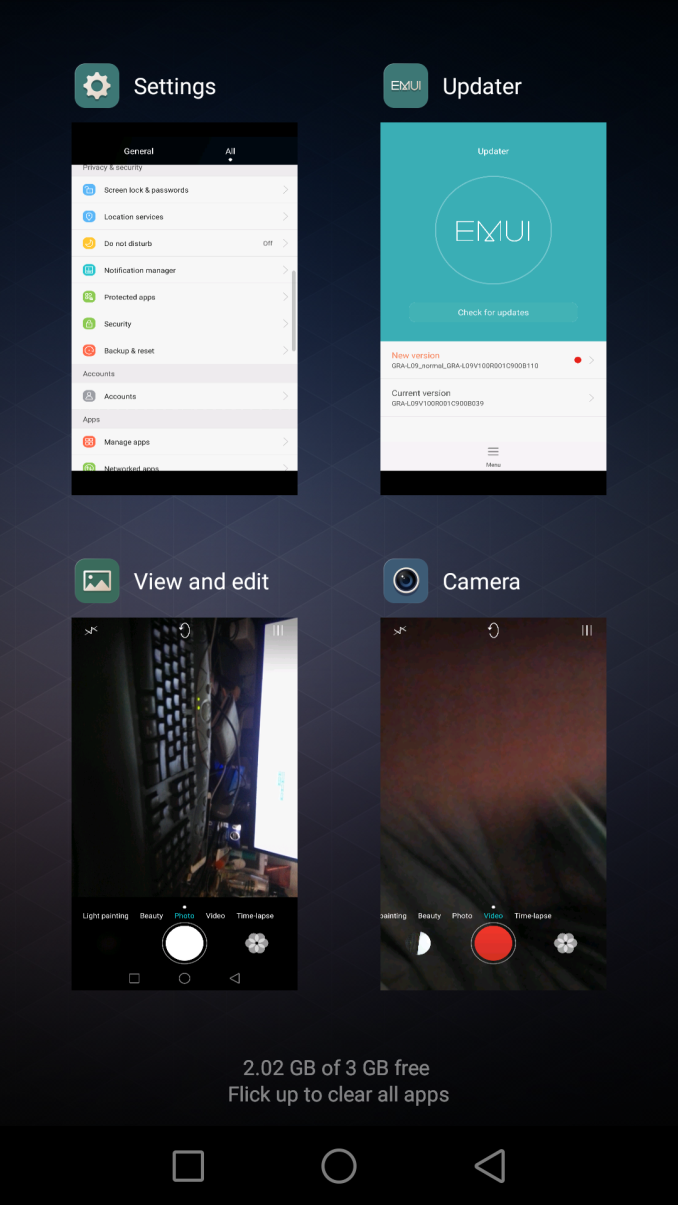
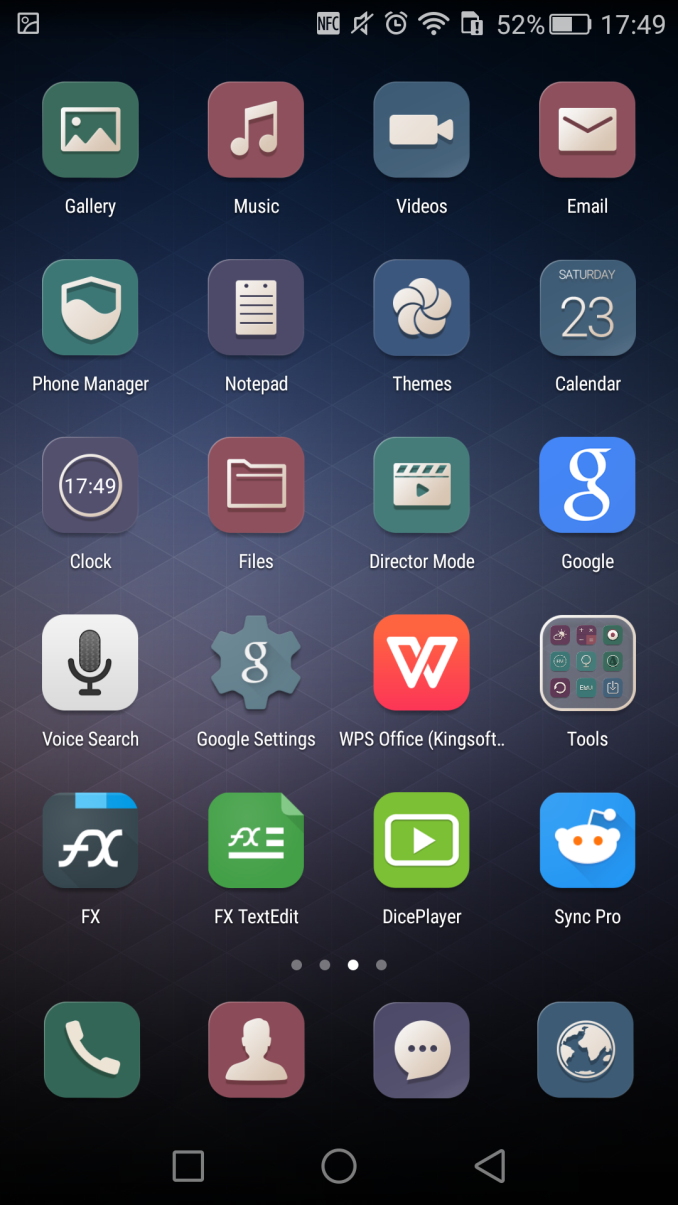
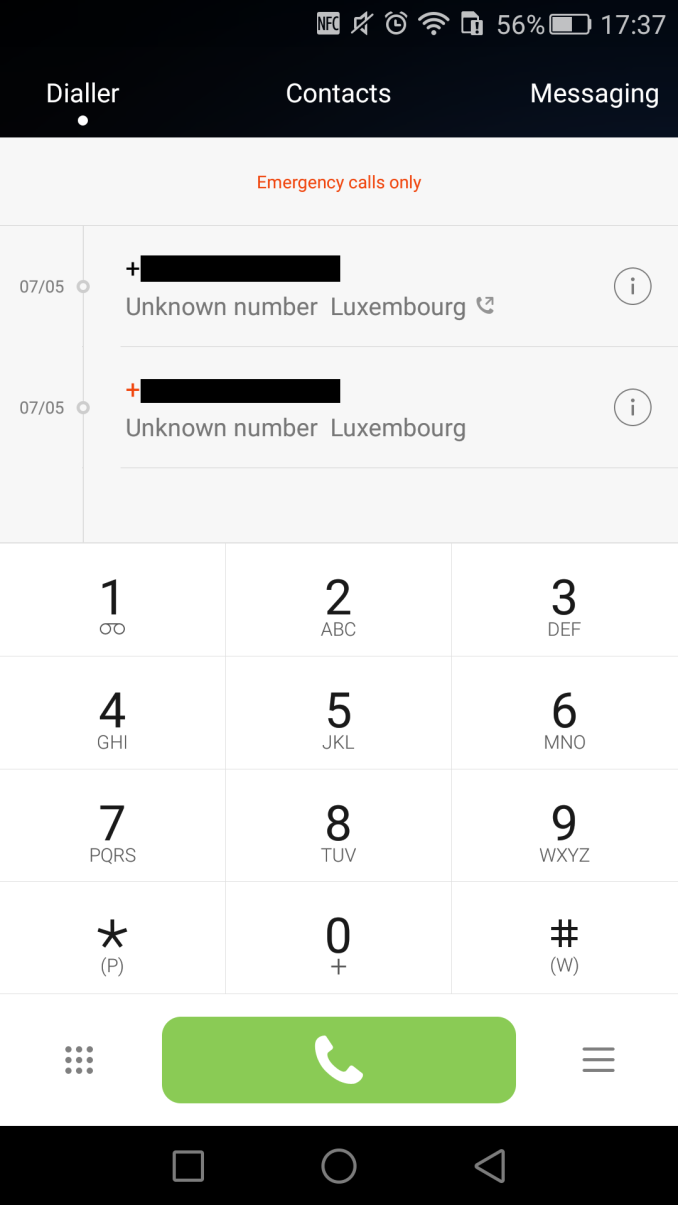
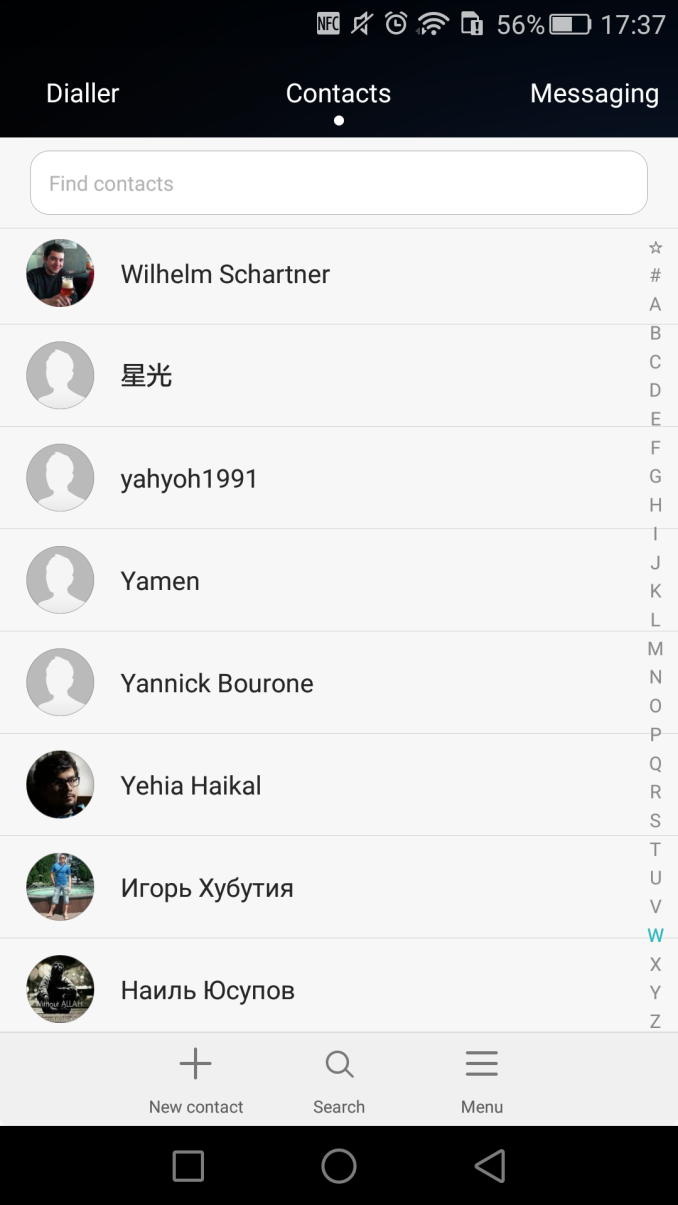

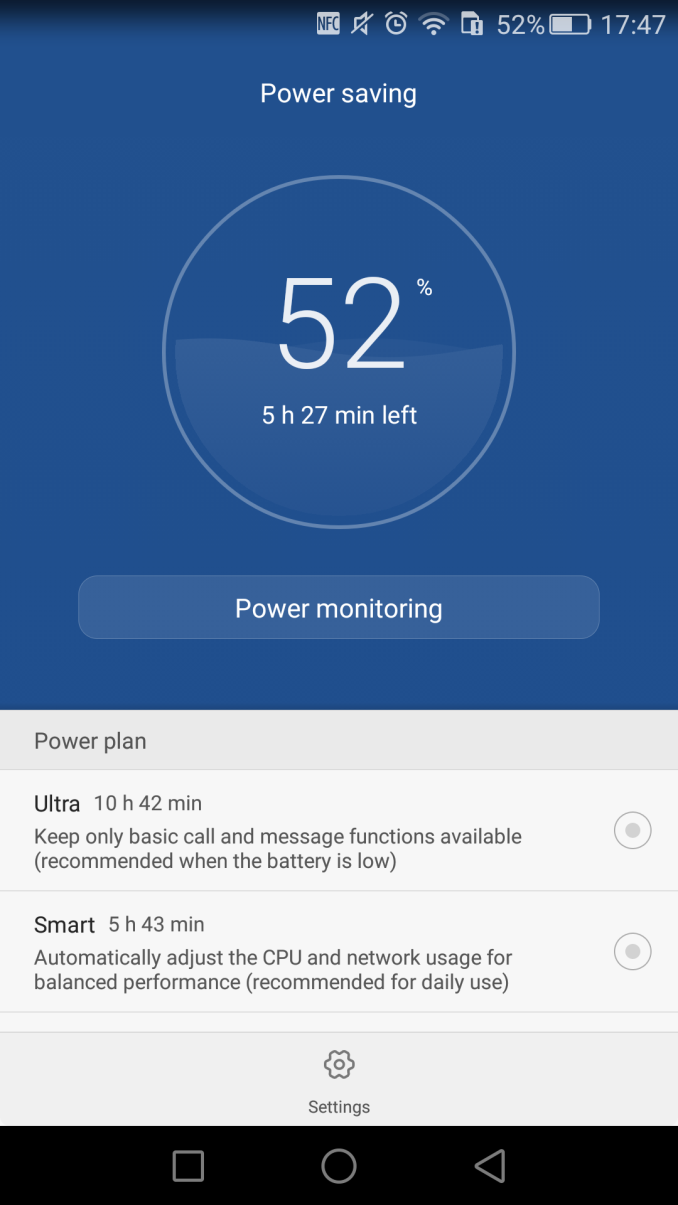
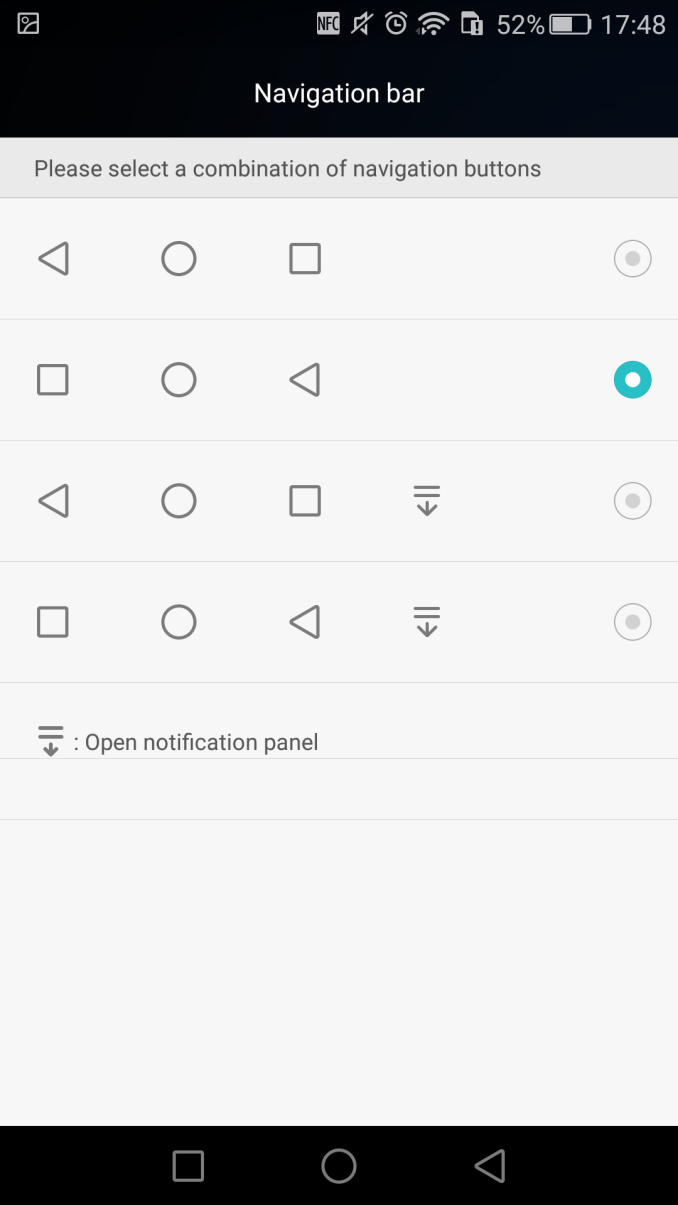
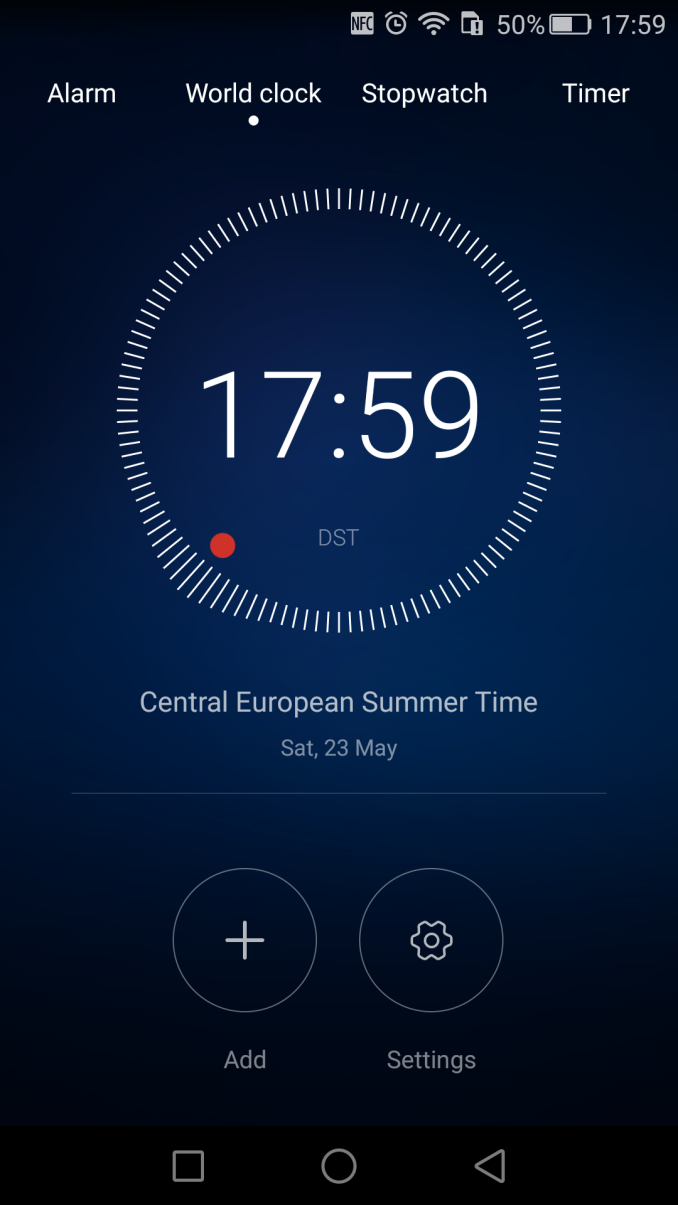
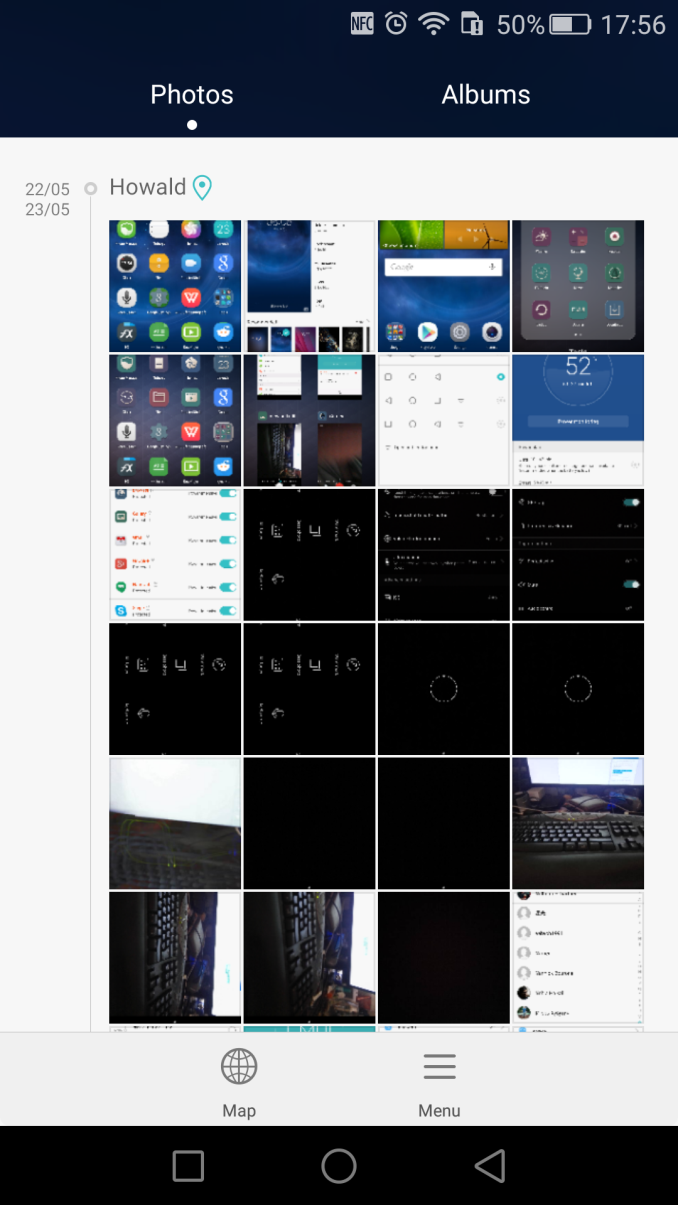
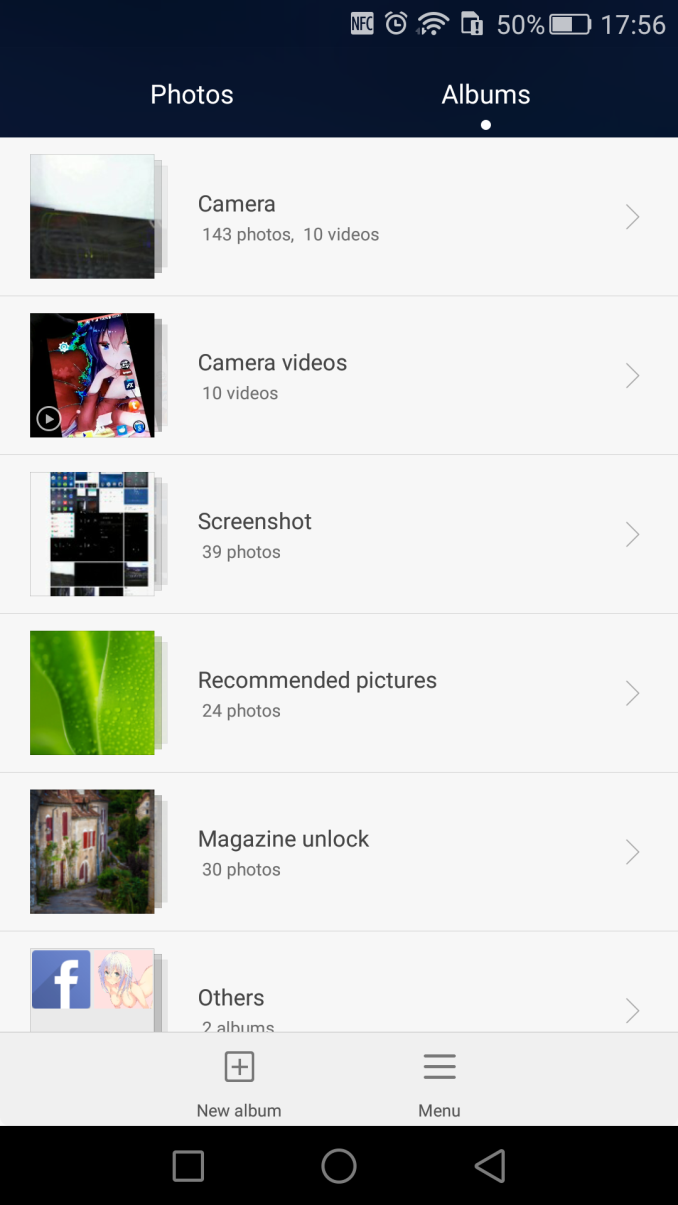
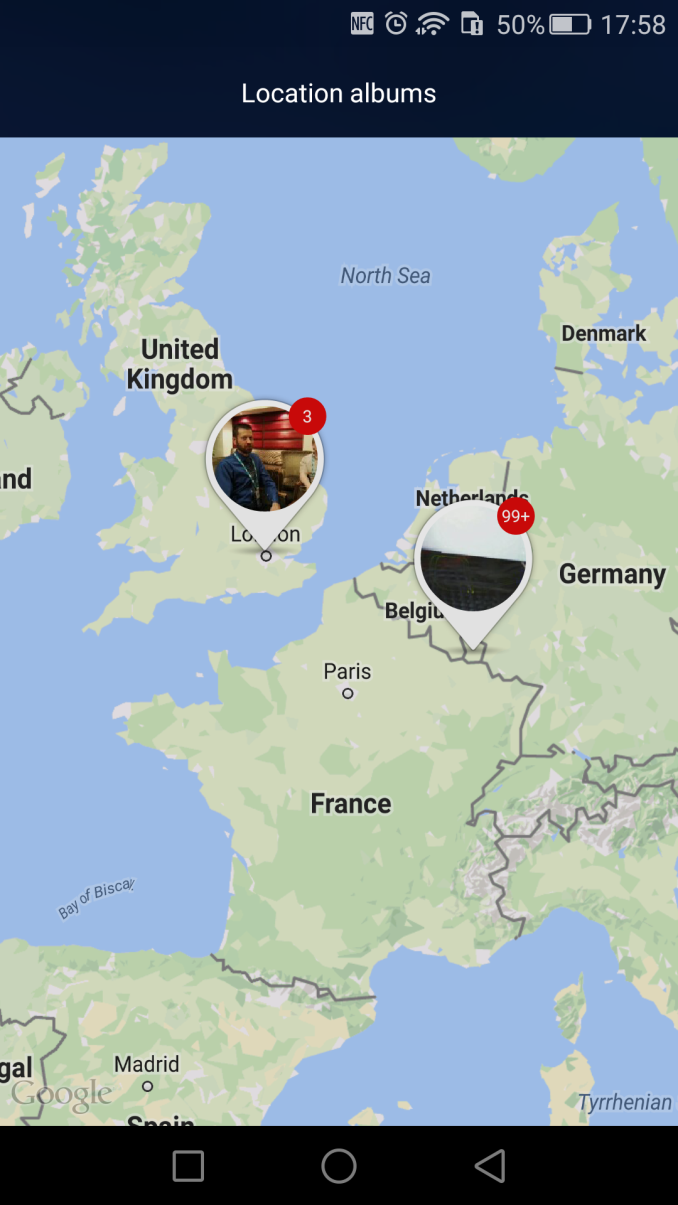
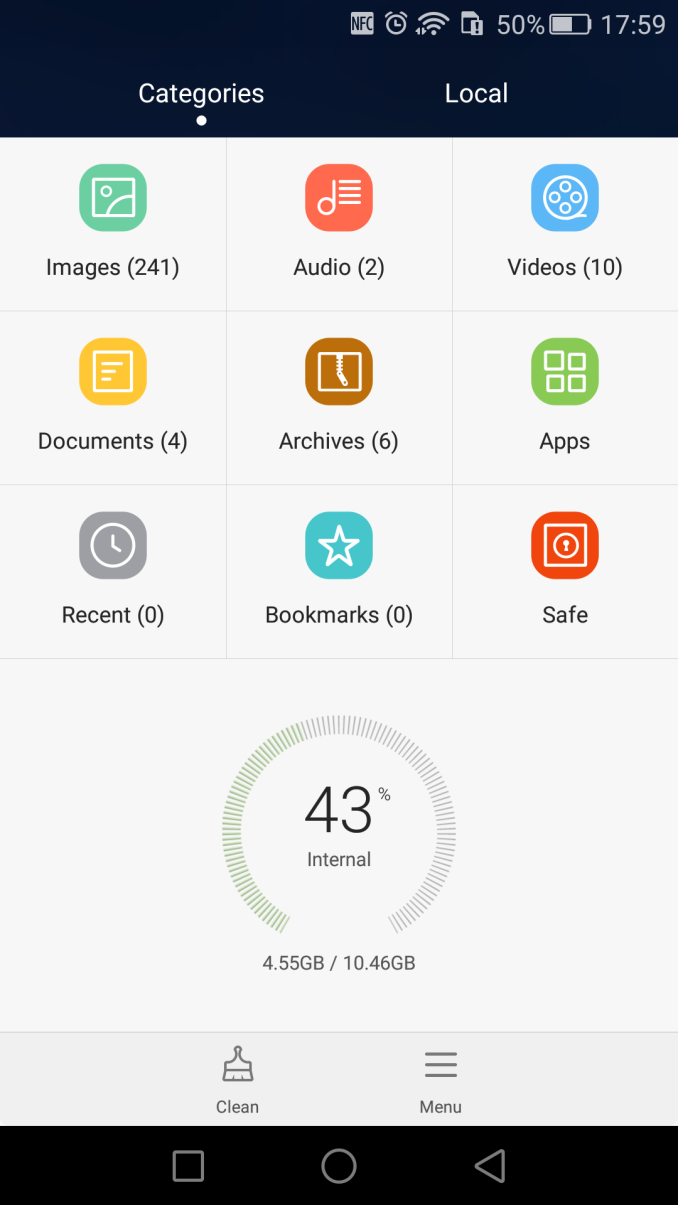














104 Comments
View All Comments
hrrmph - Thursday, June 4, 2015 - link
It's probably more useful than an iPhone for people who travel a lot and occasionally go off the grid, and thus need the device to still work as a GPS, camera, miniature computer, etc, while drawing all data from fast, convenient local storage...- It has a MicroSDXC slot, so it can take the new 200GB MicroSD storage cards; and
- It has dual SIMS.
Unfortunately, it lacks a user removable battery, so it is still inferior in that regard to each of the phones and phablets that I already have. But, in general, I like what they are doing.
Something that other nationals can tend to forget is that China has a lot of wealthy people (far more than the US or possibly even Europe). Even though these elite Chinese are wealthy, many of them are shrewd spenders. They want value for their high-end spend. So there is a lot of pressure on Chinese vendors to produce high-end devices that include every possible feature.
So just like Japanese enthusiasts used to get certain stereos and cameras that America only dreamed of, the Chinese are demanding that the manufacturers provide more fully functional high-end phones that can do everything... including the things that the iPhone cannot do.
That said, the iPhone is making headway in China too...
... but just like in the US, it's for all the wrong reasons. Namely, it's a jewelry piece that holds sway as a status symbol amongst the more vacuous of minds. Owning one supposedly elevates your perceived social status - much in the way that owning a ludicrously expensive sports car or ultra-luxury car does the same (think Rolls-Royce, Bentley, etc.).
Sociologists and psychologists have hypothesized that such objects are attractive to both the buyers who display them publicly and to those who view them, particularly the opposite sex.
People who buy these objects are subliminally advertising to potential mates that they have excess money that (under the proper circumstances) can in the future be re-directed to caring and tending for children and non-working spouses.
The attraction effect is generally stronger if the object is purchased and displayed by a male, because many societies still expect the male to bear the larger burden of providing financial resources. This is especially the case while the female is pregnant and in the early years of caring for children that aren't yet school aged.
The larger the excess spend over the practical value, the higher the perception of excess earning capacity. That's why we sometimes see phones sold with precious jewels encrusting them. Apple is just doing the same thing on a lower level... right out of the box. Charging more than the inherent underlying value.
So it's rather refreshing to see the Chinese manufacturers taking a different approach.
And it is especially refreshing to see the Chinese doing this in light of the fact that Samsung vacated the market as an Apple competitor and have now lowered themselves to merely matching Apple's product features. Without the Chinese, the Apple-Samsung twins (newly conjoined) don't really have any competition. The Chinese upping their game changes things.
Of course Apple can play this game too if they want. They simply need to offer more than 264GB of storage. The P8's 64GB of onboard NAND storage combined with the new SanDisk 200GB Micro-SDXC storage card will now set a very high bar that Apple needs to try to hurdle over (if Apple wants to be taken seriously with regard to storage).
I'm thinking that if Apple offers its next phone with 512GB of storage then that would safely secure the storage crown for them (remember, Samsung used to regularly double Apple's storage by simply adding a Micro-SD slot, but Samsung has now given up on competing).
Then Apple would need to add Dual-SIM slots to improve connectivity and travelability. It may come as a surprise to the uninformed that the newly wealthy Chinese (like many other nationals) are joining the tourist-corps. They are world travelers and they want their phones to work anywhere that they are likely to travel. Having Dual-SIMs makes it both convenient and affordable (roaming data charges are still the bane of the planet, even for wealthy Chinese).
I would also argue that to be better than what I've personally already got (and most Chinese, other Asians, Middle-Easterners, Africans, and Europeans already have), Apple would need to offer user removable back covers and batteries. Nothing says "I can handle a thirty hour multiple segment, multi-modal (air, sea, and land) journey" than a couple of lightweight fully-charged spare batteries. No awkward cables... just plop in and play on like nobody's watching.
So the Chinese phones are Apple clones? Nahh, this is just the Chinese practicing for the end-game. They want to do what Samsung used to regularly do to Apple: offer the consumer more for less... and the Chinese have just proven that they can win the storage crown. So who is to say they won't eventually win the various other races to provide the best-of-the-best on the other features? All it requires is Apple-Sung to remain lazy… which is something they have lately proven to be very adept at.
pityko - Thursday, June 4, 2015 - link
I signed up just to be able to thank you for this comment. You brilliantly summarised everything that's wrong with the current "leaders" of the mobile phone industry. I've been a Samsung user for years after being disappointed by the iPhone 3G then HTC in general but now when my contract expires for my Note 3 I am leaving for a Chinese brand, I want to support a company that hasn't given up trying.pgari - Thursday, June 4, 2015 - link
Always surprises me how people in these blogs write about what Apple "should do", but for what? To be even more successful? What are their credentials?Of course, anyone can say what they like or dislike. But the implicit assumption in most of these comments is "I know better", which is, at the least, presumptuous
Rod_Serling_Lives - Friday, June 5, 2015 - link
Well said. Apple already dominates with only a handful of devices and I don't know if they could be in a better position than they are currently.nathanddrews - Friday, June 5, 2015 - link
Personally, I don't like anything about Apple except the build quality of most of its products and its stock price. Cha-ching! I don't buy Apple products or use Apple software, but I'm happy the corporation is so successful. Deep down inside, I find myself horribly judging and mocking consumers of Apple products, but then I just have to remind myself not to feel bad about it. They're already dead inside.;-)
Brakken - Friday, June 5, 2015 - link
I think it's Tall Poppy syndrome... even ignoring everything else Apple has pioneered over the years and just looking at the Apple Watch - first gen of hardware and software, and it's amazingly smooth and will have years of support and development. With the hardware makers for Android, they are all dropping support for SD cards and removable batteries, except LG (?), but no one seems to talk about it when it happens. I think people start making 'I know better' statements because they don't check history.MarcSP - Saturday, June 6, 2015 - link
I agree with many of the things you said, but your theory about iphone as a status symbol is incomplete. I mean, according to what you said it seems that most buyers should be single men, and I have seen as many women as men with iPhone in Shanghai (maybe more, as female tend to follow fashion very strongly, and most cannot choose a phone based on "tech" or "features").Also, many married couples and middle aged and old persons use iPhone. Even students have them.
It always strikes me, because in China iPhone's price is quite higher than the average salary in the first tier cities. Imagine if an iPhone cost 2000 USD in the US. Nobody would buy it, but in china they do.
I guess mostly because the "status symbol" thing, but not to impress potential sexual partners, just to say "hey, look, I am NOT POOR", even if you are and cannot afford a health insurance and use recycled oil for cooking. After the communist times, Chinese socity has gone to the other extreme. Now being poor is not just pityful, it is shameful. No matter how, even if you have to sell tainted milk to babies or steal from your fellow citizens with lies, you MUST become rich. Of course, most cannot, so that's why they think having a "symbol" is better than nothing. "Appearence" is king nowadays in China, not "substance". I guess they need 20 more years to find a balance. Too many changes, too fast.
Ethos Evoss - Friday, June 12, 2015 - link
jesu su writing a book ?jjj - Thursday, June 4, 2015 - link
You wish the iphone had a sane design like this instead of their roadkill look.puremind - Thursday, June 4, 2015 - link
If Apple had cloned this device, it would have been better. Instead of the huge bezels it would have had a much more usable form factor.